A Budatétényi Rózsakert rejtett értékei: szárnyas-tüskéjű rózsa (’Pteracantha’) - Tájépítészeti, Településtervezési és Díszkertészeti Intézet
A Budatétényi Rózsakert rejtett értékei: szárnyas-tüskéjű rózsa (’Pteracantha’)
The hidden values of the Budatetényi Rose Garden: winged-spiked rose ('Pteracantha')
Last modified: 26. January 2023
I thought a lot about which of the more than a thousand roses of the Budatetény rose garden should be discussed now and which one I should write about at a later date. My colleagues recommended that I choose a variety that blooms only once during the winter, so that they don't read about it when it has already bloomed.
And then we can stop here for a moment! After all, why is there this striking duality? Single-flowering and multi-flowering? Are roses really that separable? Is there no transition between the two types of flowering?
Well, they really are different. Domestic wild roses never bloom more than once, and they usually do so in late May or early June. Similarly, most roses of North America and Asia do not bloom after they have already bloomed once, but wait a year. The reason is easy to understand: for the rose, flowering only serves to promote fertility, a kind of insect attractant. The true value of the rose is the rosehip, as the seeds are found here. In temperate climates, late flowering is unnecessary, as the fruit formed from such flowers - in the case of roses, rosehips - will no longer ripen. From the plant's point of view, this is a huge waste of energy: water, sugars, acids, dyes are wasted, because the immature seed does not germinate and is not suitable for reproduction.
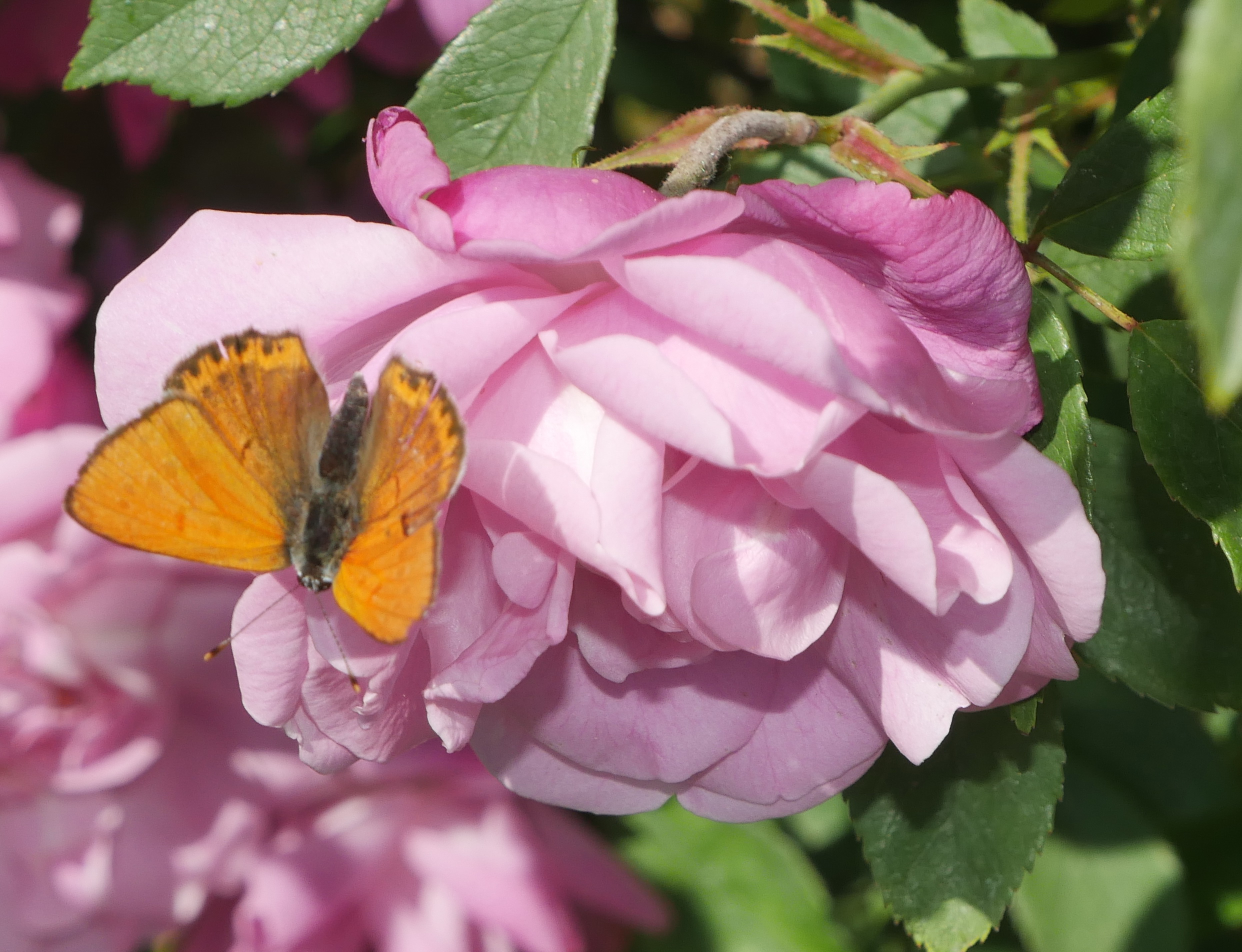
A series of plant hormones ensure that unnecessary flowers and rose hips do not form on the rose stems. Among these, the so-called gibberellic acids are responsible for sensing the winter cold. Due to their regulatory function, a flower only forms at the end of a shoot if the bud from which it developed has experienced a winter frost. On the other hand, the side buds of the summer shoots only form in spring or summer, the cold could not touch them, so these side shoots - at least in the case of wild roses - do not close in flower. However, not only wild roses bloom once, most of the historical varieties also do so, especially gallica roses, white (alba), centifolia roses, but also moss roses.
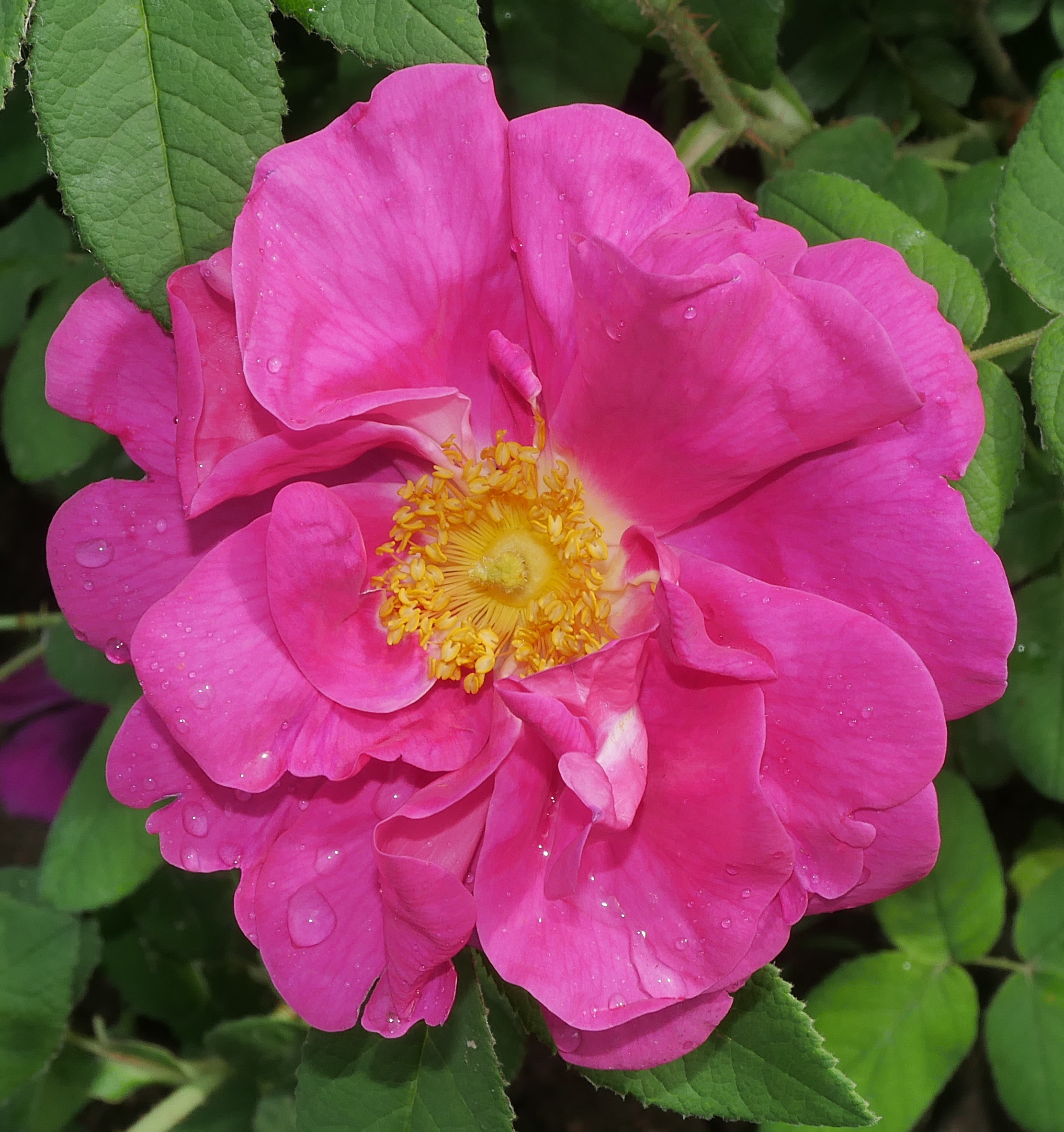
However, some Asian roses lack this inhibition, i.e. the need for cold, which is why the rose blooms several times a year, and every shoot closes with a flower, i.e. it renovates. This is mostly true for roses that are used to very long summers and frost-free autumns, these are often plants of the subtropics. Since they bloom in several waves, it is not uncommon to see both flowers and rose hips on one stem. Examples include the Japanese rose, the musk rose or the giant rose.
The Chinese rose is similar to them, but this is another case. It gives an incredible mass of flowers until the frosts, but at the same time it hardly produces rose hips. Here we can talk about a mutation that happened about a thousand years ago, that is, a genetic error, the inhibition simply does not work. However, if it is true that this overstresses the plant, why did it not die? Obviously, because hardworking Chinese people discovered it, dug it up, potted it, then propagated it, and it is still being maintained by humans. And the Chinese roses found in the wild are probably only escaped garden varieties.
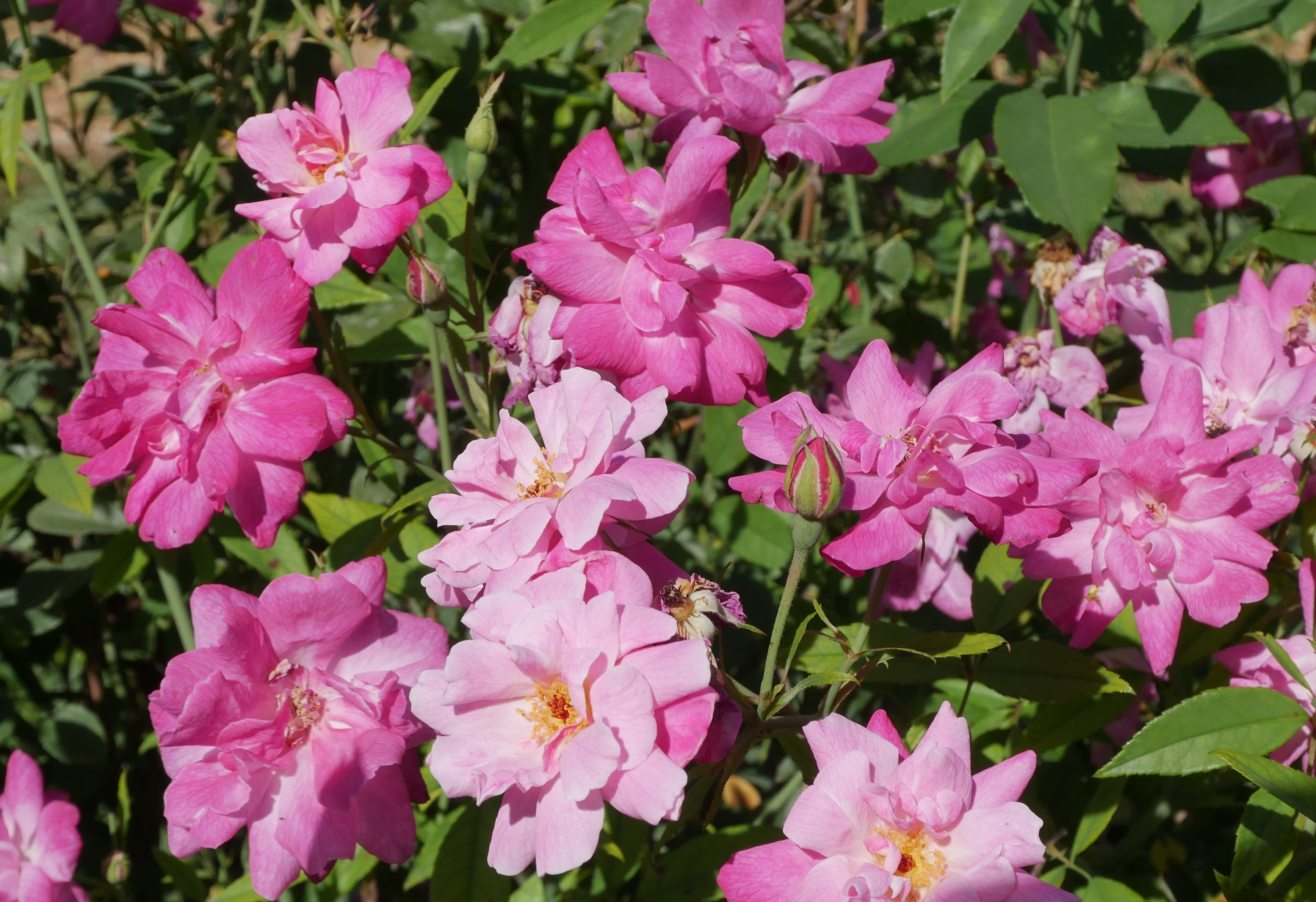
The renovating ability of musk roses and Chinese roses has been passed on to their offspring, which is why many damask, bourbon and noisette roses bloom several times a year. The tea hybrids - that is, the cut roses - do not simply bloom intermittently, but practically continuously, since one of their ancestors is the Chinese rose.
Most of the varieties in our rose garden are being renovated, as they were introduced in the 20th century. was bred in the 19th century, mostly using tea hybrids. However, we have also created a smaller demonstration plot for the historical varieties, where most of the roses no longer bloom in the summer - although their rosehips can sometimes be quite spectacular.
But which type of plot should we present now? Maybe exactly the one where it doesn't matter when it blooms, because we don't plant it for its flowers! And this is the winged-spiked rose. The name of the variety was not invented by the Hungarians: 'Pteracantha' is the correct name, and scientifically Rosa omeiensis f. pteracantha. This Latin name refers to a wild rose that was discovered on Mount Omei (Emei Shan in Chinese) in Sichuan. Jesuit Father Jean-Marie Delavay noticed it just as it was flourishing. He immediately liked it, because it was different from all the roses he knew, but he had to wait, since he couldn't send flowering shoots to Europe. Therefore, in the fall of 1887, he visited it again, took seeds from it, which he sent to France, to the Vilmorin family of gardeners, more precisely to Maurice de Vilmorin. He then raised the first European stems and began to distribute them.
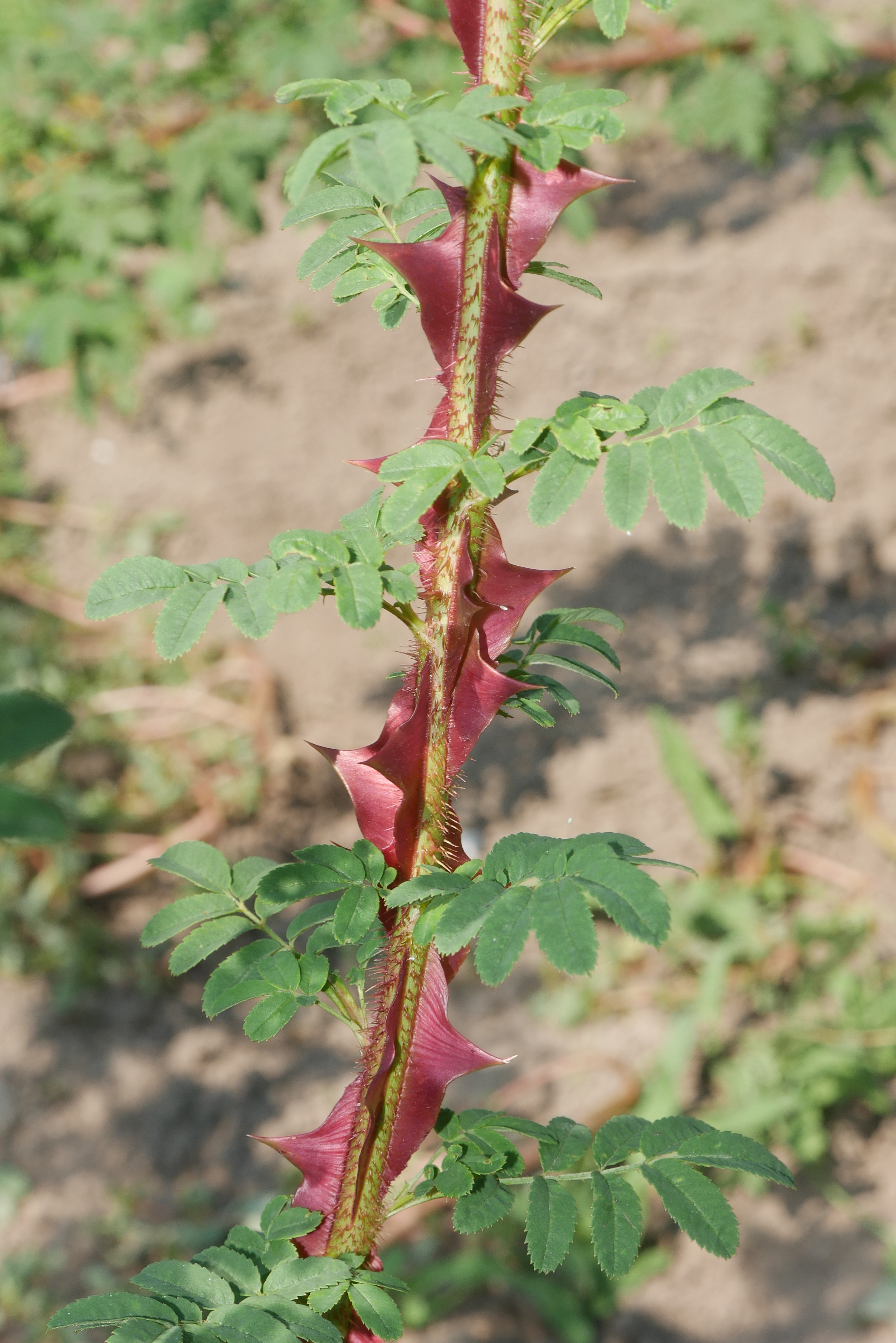
But what is so special about this breed? Almost everything. Its flowers are small and whitish, but in Hungarian conditions they open already in April, far ahead of Budatetény's other rose varieties! Its petals are also unusual. Perhaps none of you have counted the petals of a wild rose, but if you did, five should have come out. Except in the case of 'Pteracantha', where, in a unique way, the flower can sometimes have four petals. At the same time, the foliage of the variety is also spectacular, because it consists of many small leaves, giving a fern-like effect. The leaf of the rose is complex, the formulas that look like leaves are only parts of the leaf: in autumn, you can clearly see how the mostly five-leafed leaves fall together. However, the leaf of our species consists of 9 leaflets or even more. This is not why we plant this rose, but for its thorn. Its huge spikes cover its shoots densely and are so wide that it looks like it has a crest. In addition, these spikes are translucent, red and glow spectacularly in the light! Later, however, they get old and brown. At that point, the bases may not be so spectacular anymore, but at least they are showy in winter. Under good conditions, there is shoot formation throughout the growing season, so you can see reddish spikes all summer long.
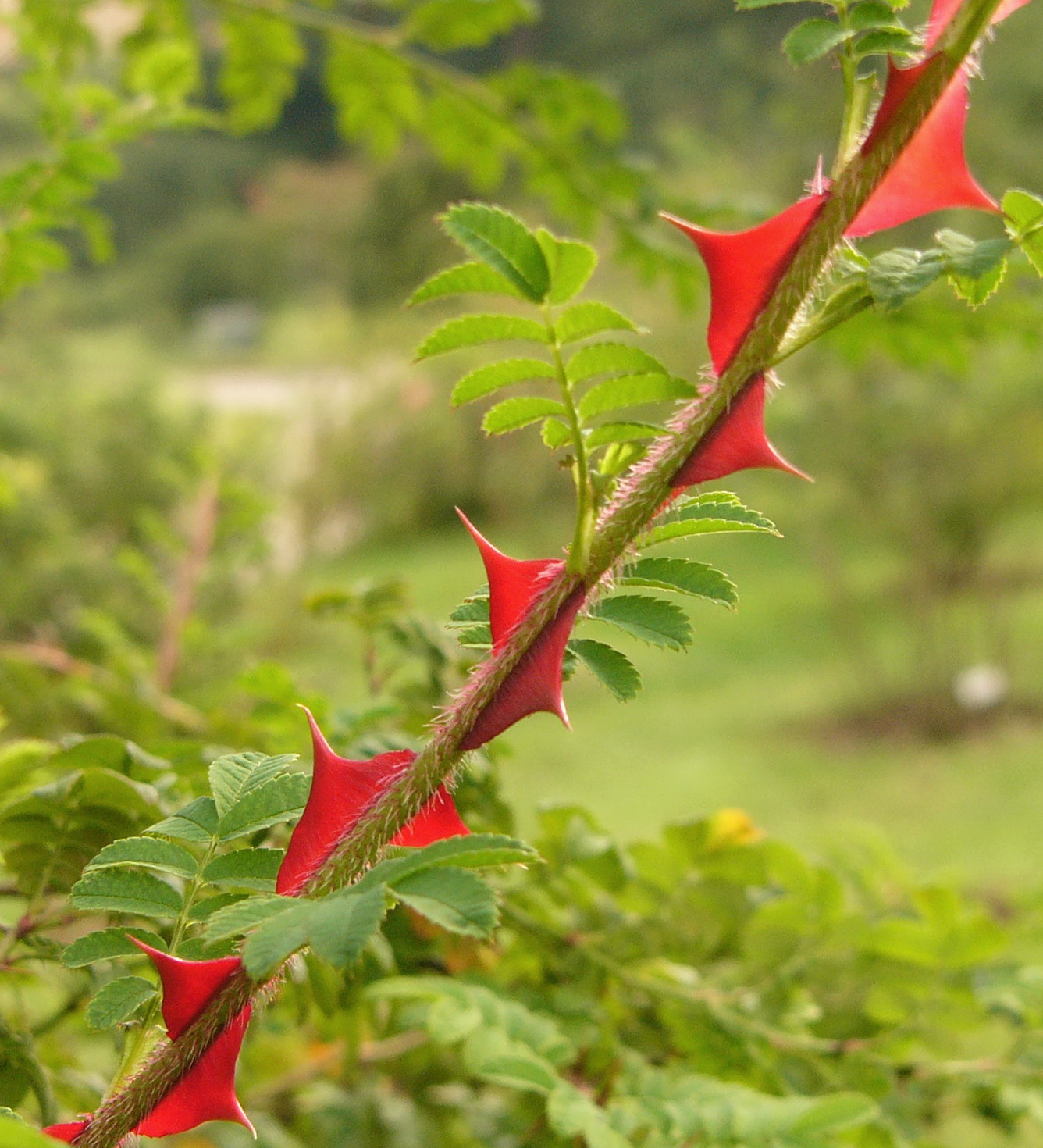
The plant grows a spreading, not too wide, rather tall bush. Nevertheless, we should think carefully about how much of it we plant in our garden, because it is not a small rose. Not particularly suitable for pots! According to our experience, it does not like calcareous soil, where its leaves lighten and the shoots can dry out.
If someone wants to research this strange rose scientifically, it's good to know that it has at least two names. Botanists are confused about where to place it. In some places, R. omeiensis f., referring to Mount Omei. it is found under the name pteracantha, elsewhere it is considered a variant of the velvet rose, R. sericea var. under the name pteracantha. In fact, there is an idea that both exist because they are two different types. It is not our job to decide this, but if the dear reader happens to be in Sichuan, do not miss Mount Omei. And please take a good look at the roses you find there! Perhaps then we will learn more about this strange type, which is not an easy task even for botanists. And if you happen to be not in Szechuan, but in Budapest, you can see some beautiful specimens in our garden in Budatetény!

